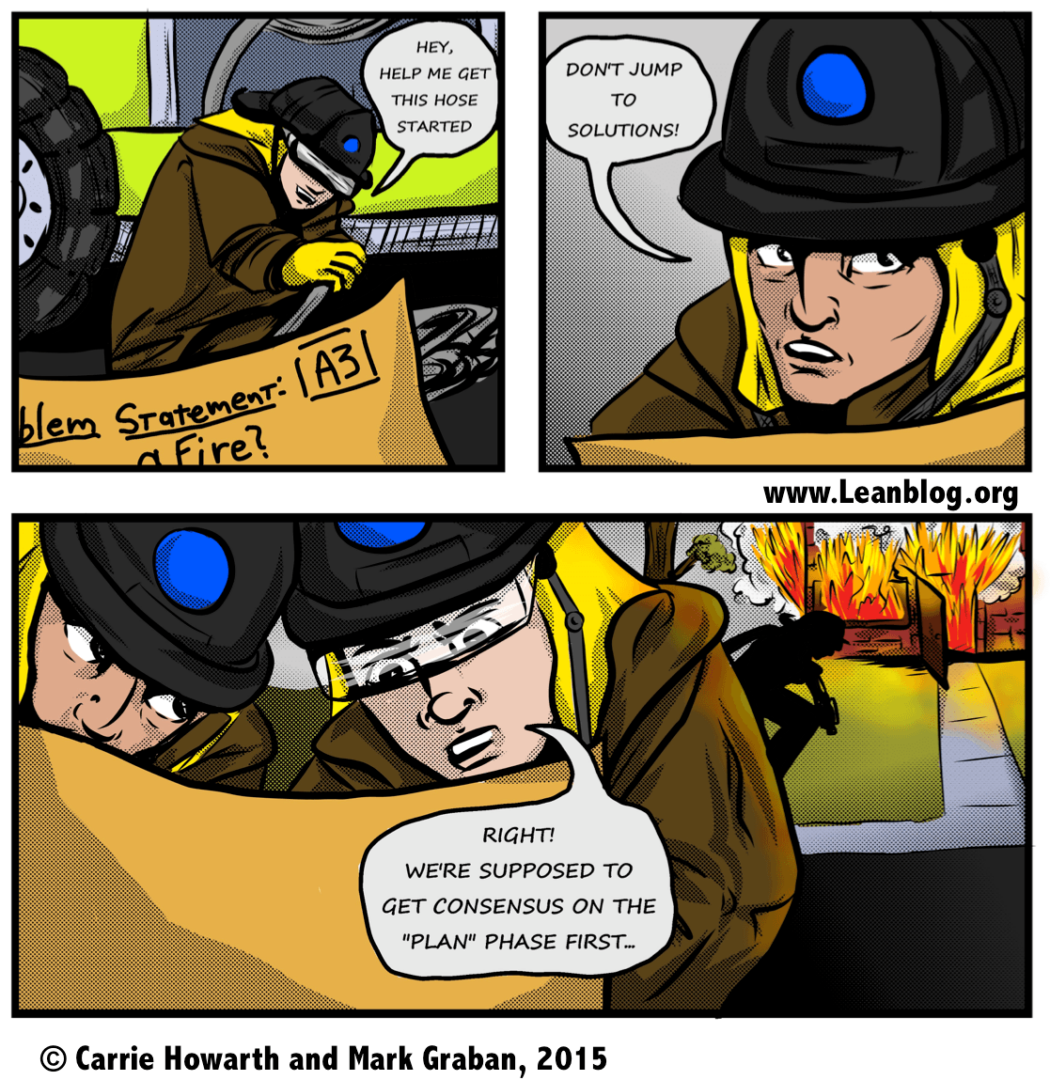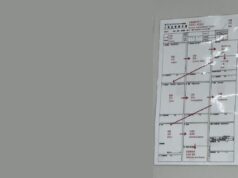Here's my latest cartoon collaboration with a skilled artist (and medical assistant), Carrie Schurman.
You can see the whole series via this link.

In the Lean world, we talk a lot about how “firefighting” is bad in an organization. What do we mean by that? We mean people are putting out proverbial fires all day, reacting to problems as they occur. Leaders and staff are often fighting the same fires day in and day out.
That all seems really unfair to real, professional firefighters.
Real firefighters aren't putting out blazes all day long. They're educating the public about good practices that keep us safe by preventing fires. They're doing a lot of training and building their skills to best be able to fight fires when they have to.
Society doesn't expect fire fighters, thankfully, to be 100% utilized fighting fires all day long. Society values having them “at the ready” to respond to a fire. Society values their role in preventing fires.
But anyway, talking about the need to “reduce firefighting” in healthcare lead to this silly thought… what if firefighters learned about Lean, but did it badly? What if they were practicing L.A.M.E. (Lean As Mistakenly Explained) instead?
What if firefighters had been told that they always have to do an A3?
When there's a proverbial process “fire,” there's a time and a place for containing the fire. We don't need to understand the root cause, necessarily. Put the fire out, make sure everybody is OK… then do root cause analysis as soon as possible while the evidence is fresh (or the embers are hot).
Back in the auto industry, when we had a quality problem, the first step was the “contain” the problem. Stop the line. Quarantine the suspected bad parts. I worked at GM, but the Ford 8-step problem solving methodology included a containment step that occurs before root cause analysis.
Let's try not to misuse Lean principles… and maybe we should be more careful about wantonly throwing around the term “firefighting” when it isn't fair to the real professionals?
Please scroll down (or click) to post a comment. Connect with me on LinkedIn.
Let’s work together to build a culture of continuous improvement and psychological safety. If you're a leader looking to create lasting change—not just projects—I help organizations:
- Engage people at all levels in sustainable improvement
- Shift from fear of mistakes to learning from them
- Apply Lean thinking in practical, people-centered ways
Interested in coaching or a keynote talk? Let’s start a conversation.







![When Was the Last Time a Leader Around You Admitted They Were Wrong? [Poll]](https://www.leanblog.org/wp-content/uploads/2025/07/Lean-Blog-Post-Cover-Image-2025-07-01T212509.843-100x75.jpg)


Via a friend on Facebook:
Hi Mark,
I think this is your best cartoon to-date! I think that we should also remember the containment that is applied to maintain suppression of the fire is just that a containment. An RCA using PDSA methodology needs to be done to address the root cause to ensure this same fire doesn’t jump up tomorrow or next week.
Dan
Thanks, Dan. I’ll pass that along to my artist partner, Carrie.
There’s a time and a place for “containment” but that’s certainly not the end of the process. Contain and THEN do root cause analysis to find countermeasures that prevent the problem from coming back.
[…] Cartoon: There’s A Time & A Place to Fight Fires (712 views) […]
And it’s also true that the most effective firefighters follow a standardized work process in fighting fires. To state the obvious, if they put process aside and simply engaged in random fire fighting behaviors things would go very poorly. I was a pilot in the USAF and all of our responses to emergencies were highly choreographed.